Abstract
A micro-growth measuring technique was used to determine the growth response of stem segments of Avena sativa cv. Avon to a variety of gibberellic acid (GA3) concentrations over a range of incubation temperatures. Growth rate varied with GA3 concentration, the temperature at which the rate was measured, and the growth temperature of the plants prior to excision of the segments. The curves relating segment extension rates to temperature were affected by GA3 such that the linear portion of the curve was shifted to higher rates as GA3 concentration was increased. The results seem to be analogous to the GA3-induced shifts of thermally induced phase transitions in glucose leakage from liposomes, observed earlier (Wood, Paleg 1974 Aust J Plant Physiol 1: 31-40).
Full text
PDF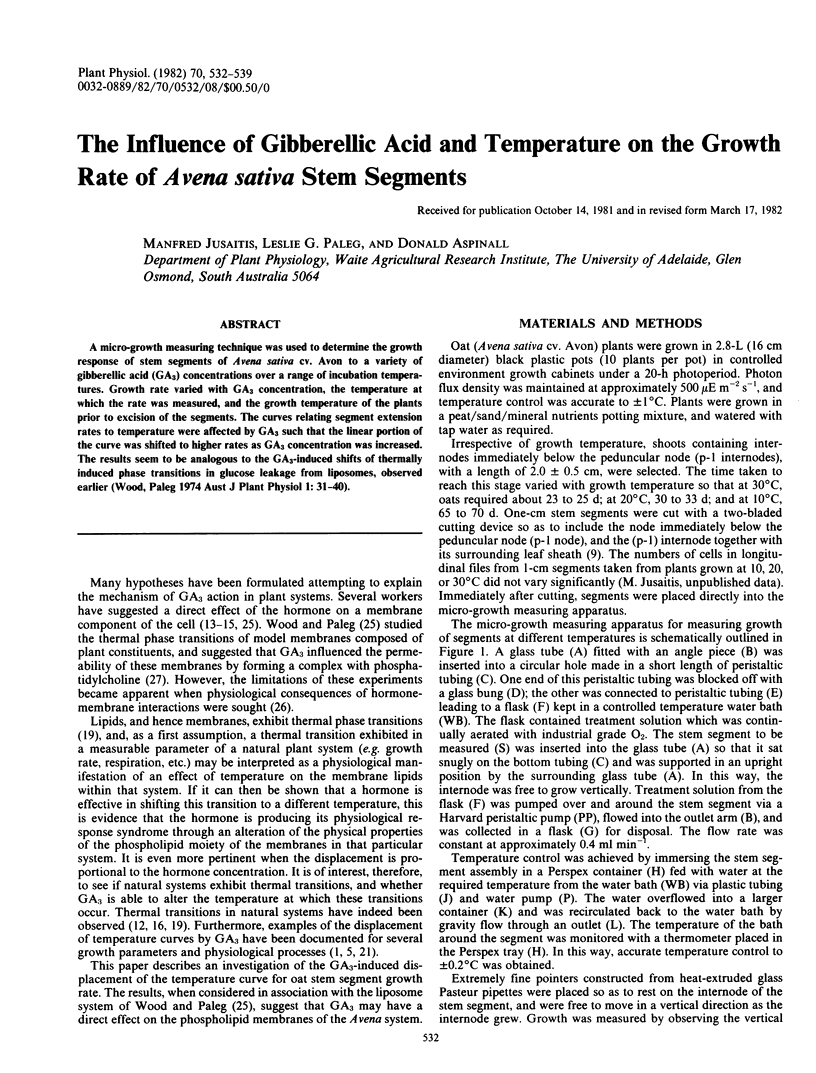
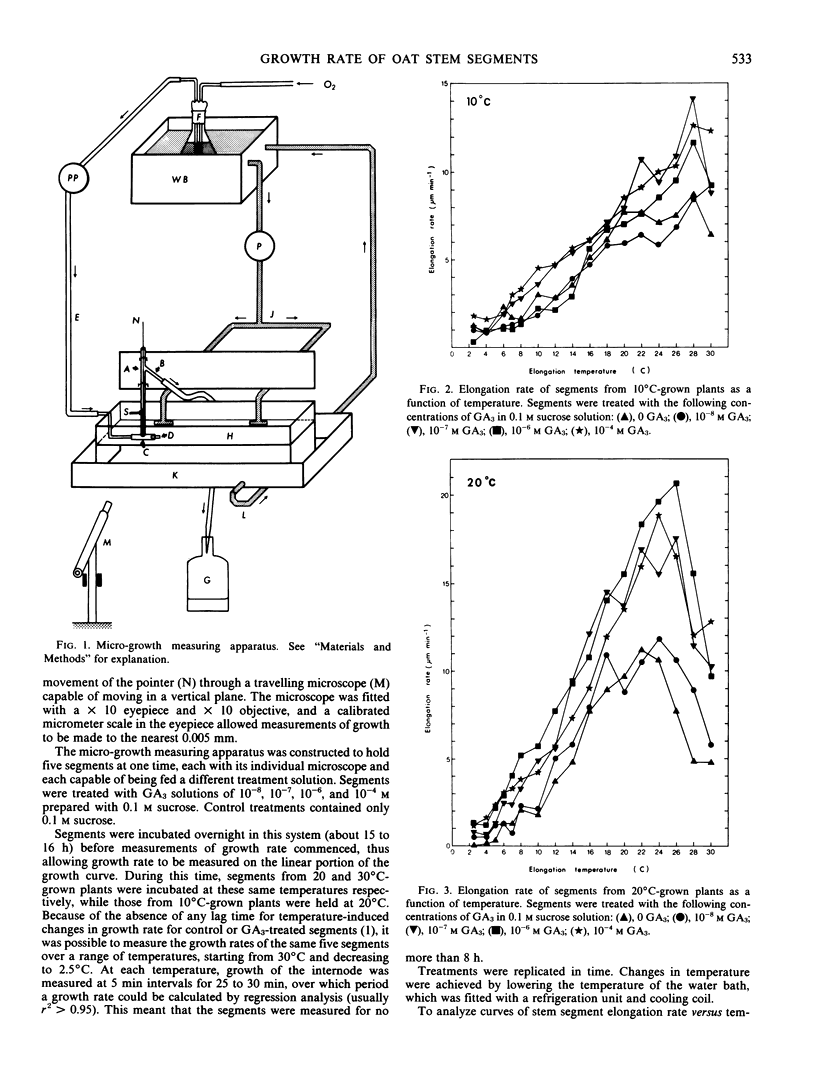
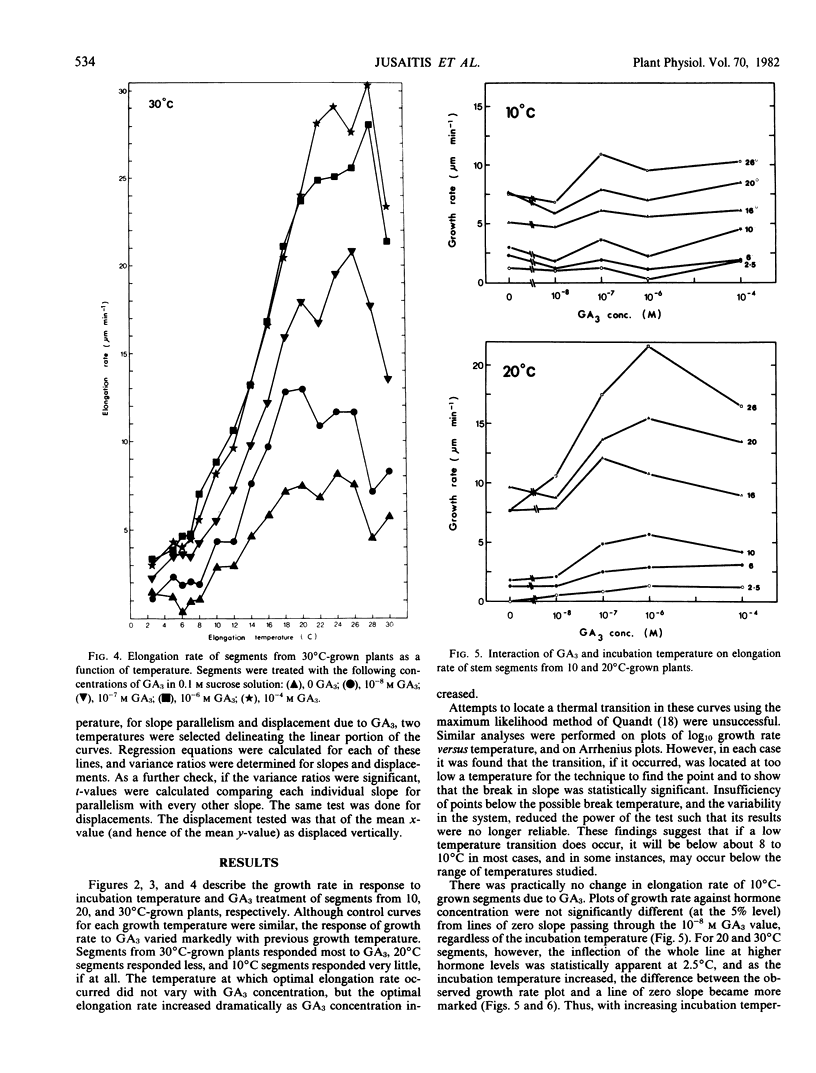
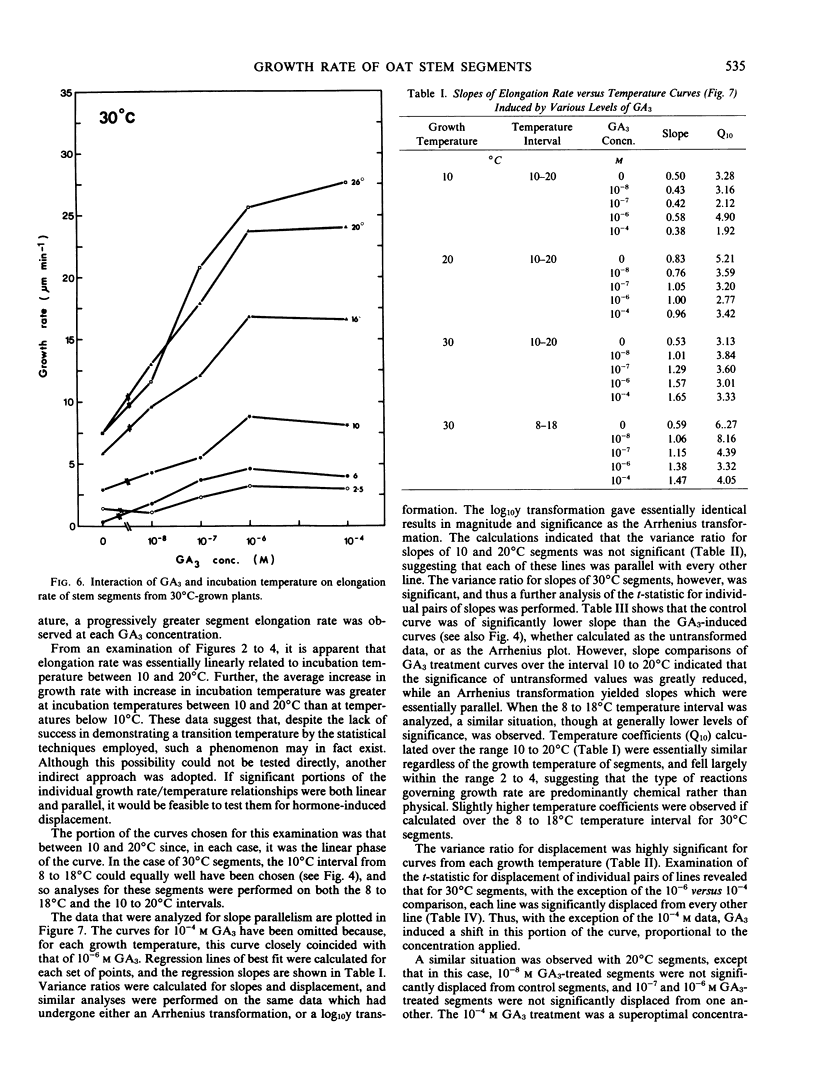
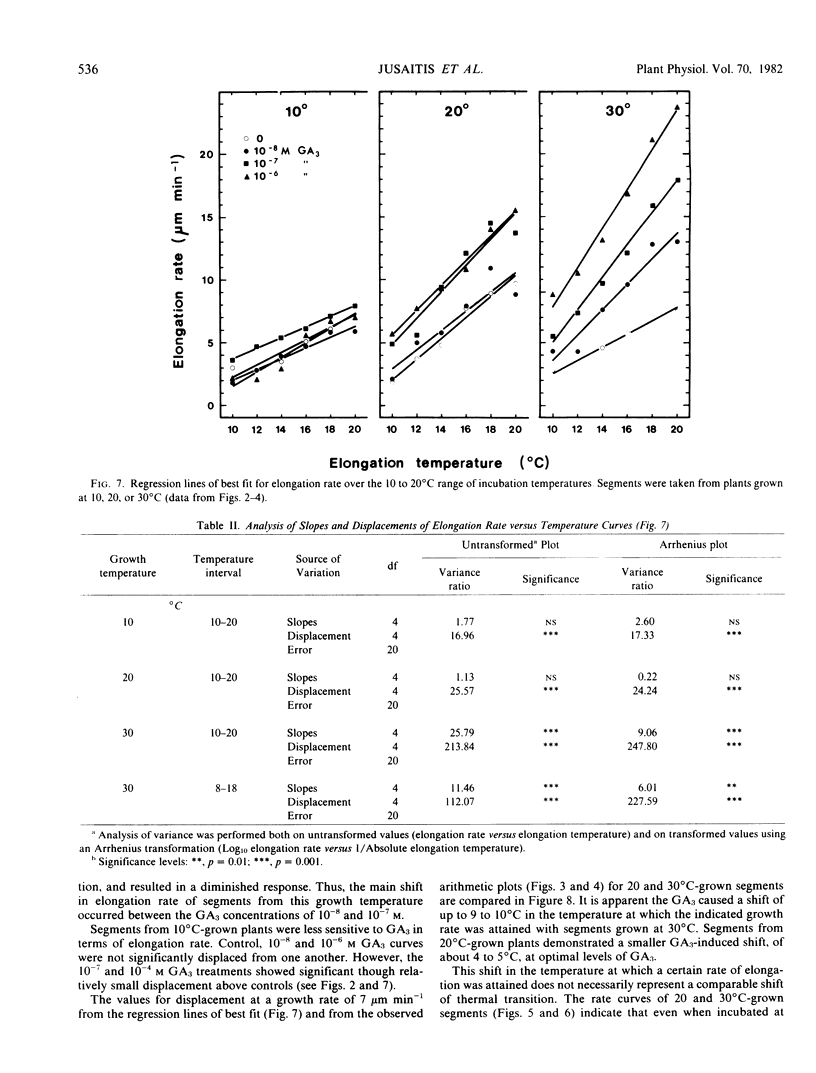
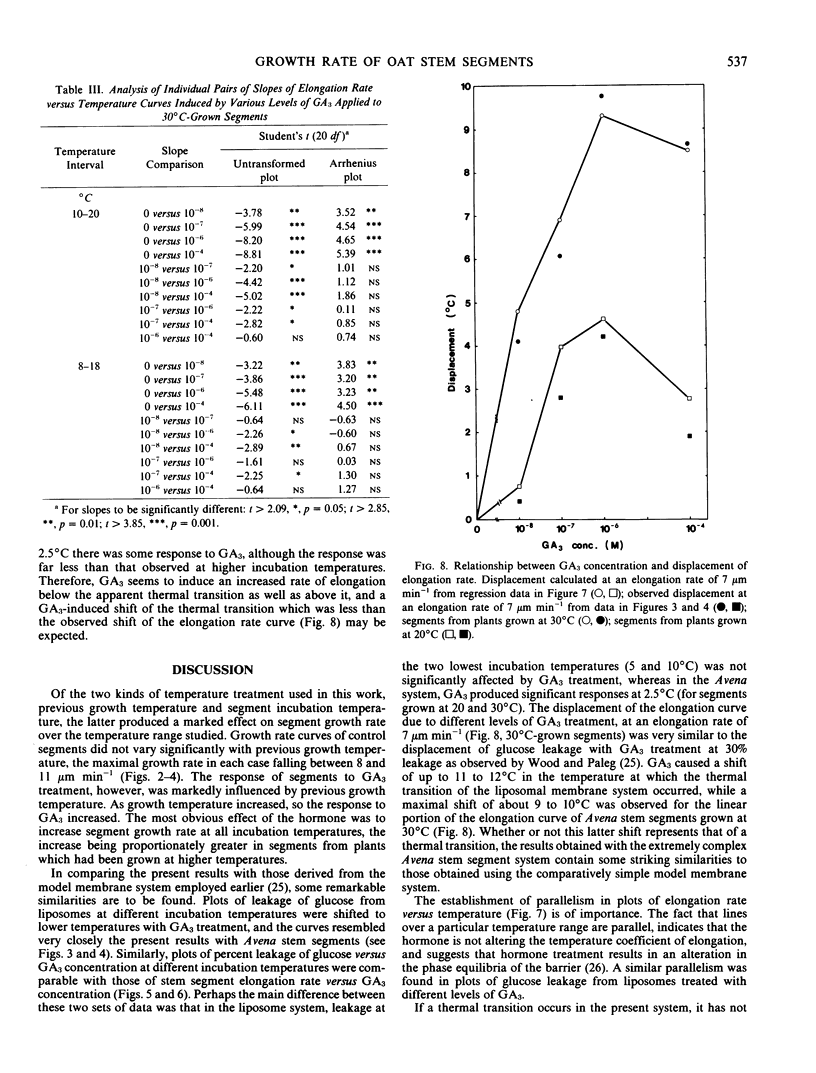
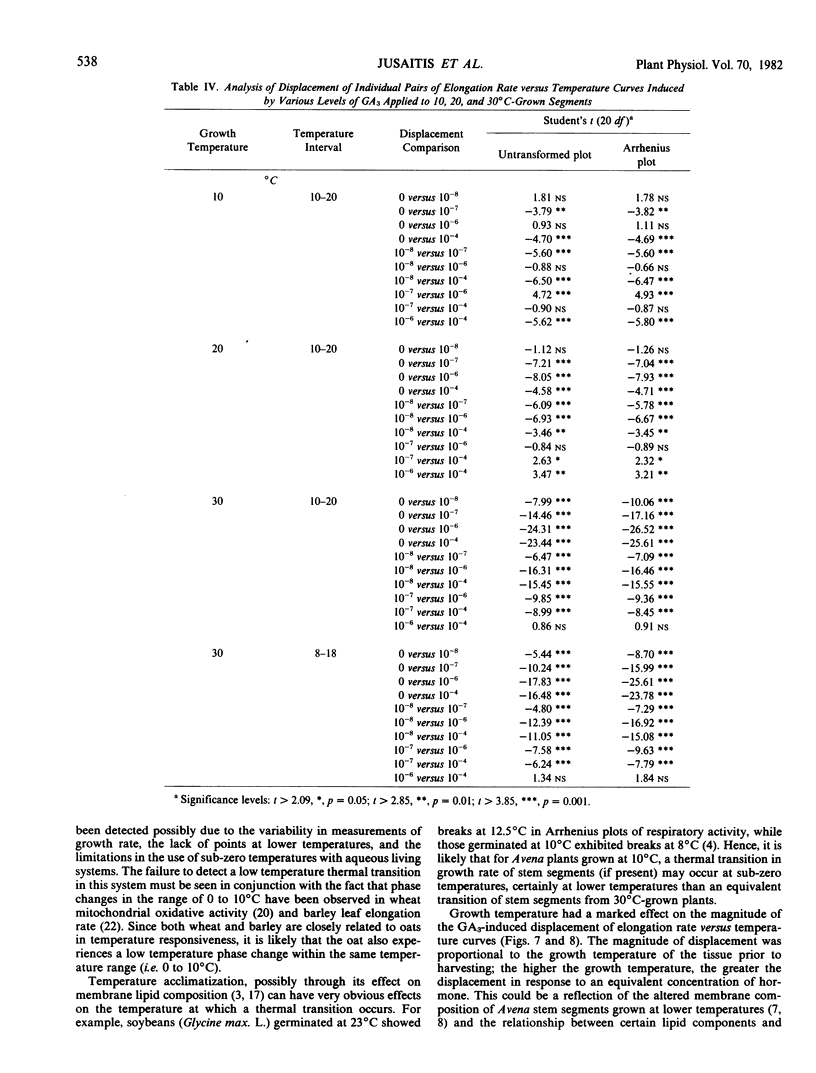
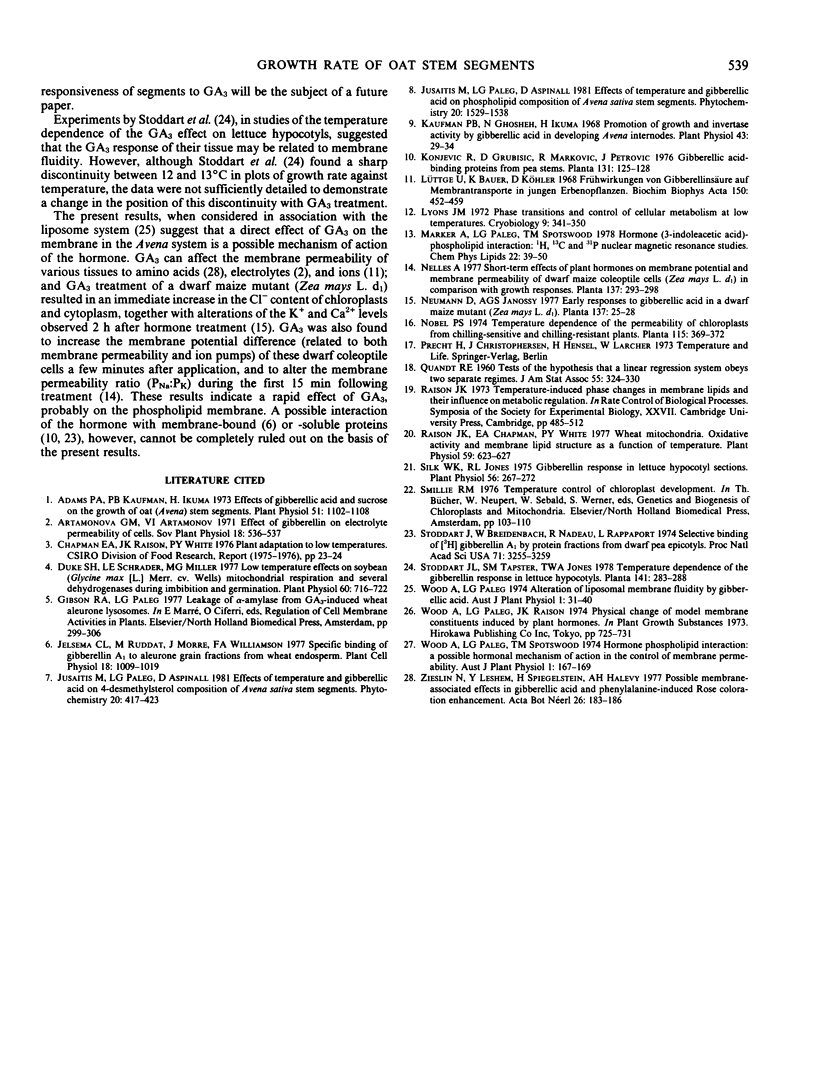
Selected References
These references are in PubMed. This may not be the complete list of references from this article.
- Adams P. A., Kaufman P. B., Ikuma H. Effects of gibberellic Acid and sucrose on the growth of oat (Avena) stem segments. Plant Physiol. 1973 Jun;51(6):1102–1108. doi: 10.1104/pp.51.6.1102. [DOI] [PMC free article] [PubMed] [Google Scholar]
- Duke S. H., Schrader L. E., Miller M. G. Low Temperature Effects on Soybean (Glycine max [L.] Merr. cv. Wells) Mitochondrial Respiration and Several Dehydrogenases during Imbibition and Germination. Plant Physiol. 1977 Nov;60(5):716–722. doi: 10.1104/pp.60.5.716. [DOI] [PMC free article] [PubMed] [Google Scholar]
- Gould G. M. A HITHERTO UNDESCRIBED VISUAL PHENOMENON. Science. 1903 Oct 23;18(460):536–537. doi: 10.1126/science.18.460.536. [DOI] [PubMed] [Google Scholar]
- Kaufman P. B., Ghosheh N., Ikuma H. Promotion of growth and invertase activity by gibberellic Acid in developing Avena internodes. Plant Physiol. 1968 Jan;43(1):29–34. doi: 10.1104/pp.43.1.29. [DOI] [PMC free article] [PubMed] [Google Scholar]
- Lyons J. M. Phase transitions and control of cellular metabolism at low temperatures. Cryobiology. 1972 Oct;9(5):341–350. doi: 10.1016/0011-2240(72)90152-6. [DOI] [PubMed] [Google Scholar]
- Lüttge U., Bauer K., Köhler D. Frühwirkungen von Gibberellinsaure auf Membrantransporte in jungen Erbsenpflanzen. Biochim Biophys Acta. 1968 Apr 29;150(3):452–459. doi: 10.1016/0005-2736(68)90144-2. [DOI] [PubMed] [Google Scholar]
- Raison J. K., Chapman E. A., White P. Y. Wheat mitochondria: oxidative activity and membrane lipid structure as a function of temperature. Plant Physiol. 1977 Apr;59(4):623–627. doi: 10.1104/pp.59.4.623. [DOI] [PMC free article] [PubMed] [Google Scholar]
- Raison J. K. Temperature-induced phase changes in membrane lipids and their influence on metabolic regulation. Symp Soc Exp Biol. 1973;27:485–512. [PubMed] [Google Scholar]
- Silk W. K., Jones R. L. Gibberellin response in lettuce hypocotyl sections. Plant Physiol. 1975 Aug;56(2):267–272. doi: 10.1104/pp.56.2.267. [DOI] [PMC free article] [PubMed] [Google Scholar]
- Stoddart J., Breidenbach W., Nadeau R., Rappaport L. Selective binding of (3H)gibberellin A1 by protein fractions from dwarf pea epicotyls. Proc Natl Acad Sci U S A. 1974 Aug;71(8):3255–3259. doi: 10.1073/pnas.71.8.3255. [DOI] [PMC free article] [PubMed] [Google Scholar]


